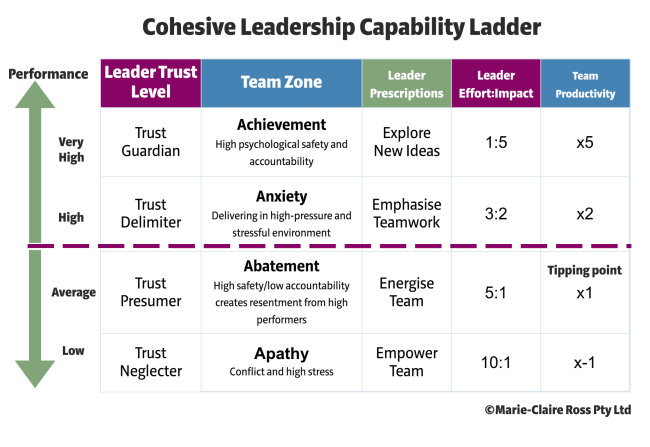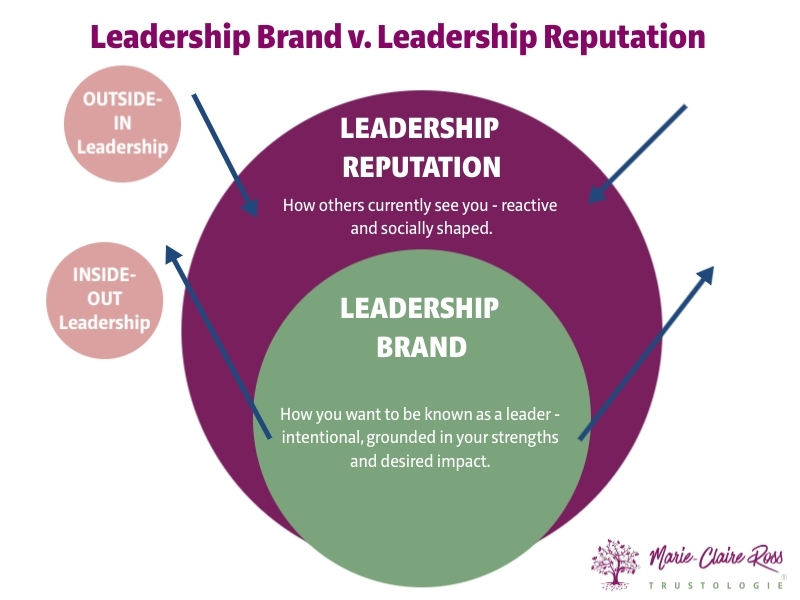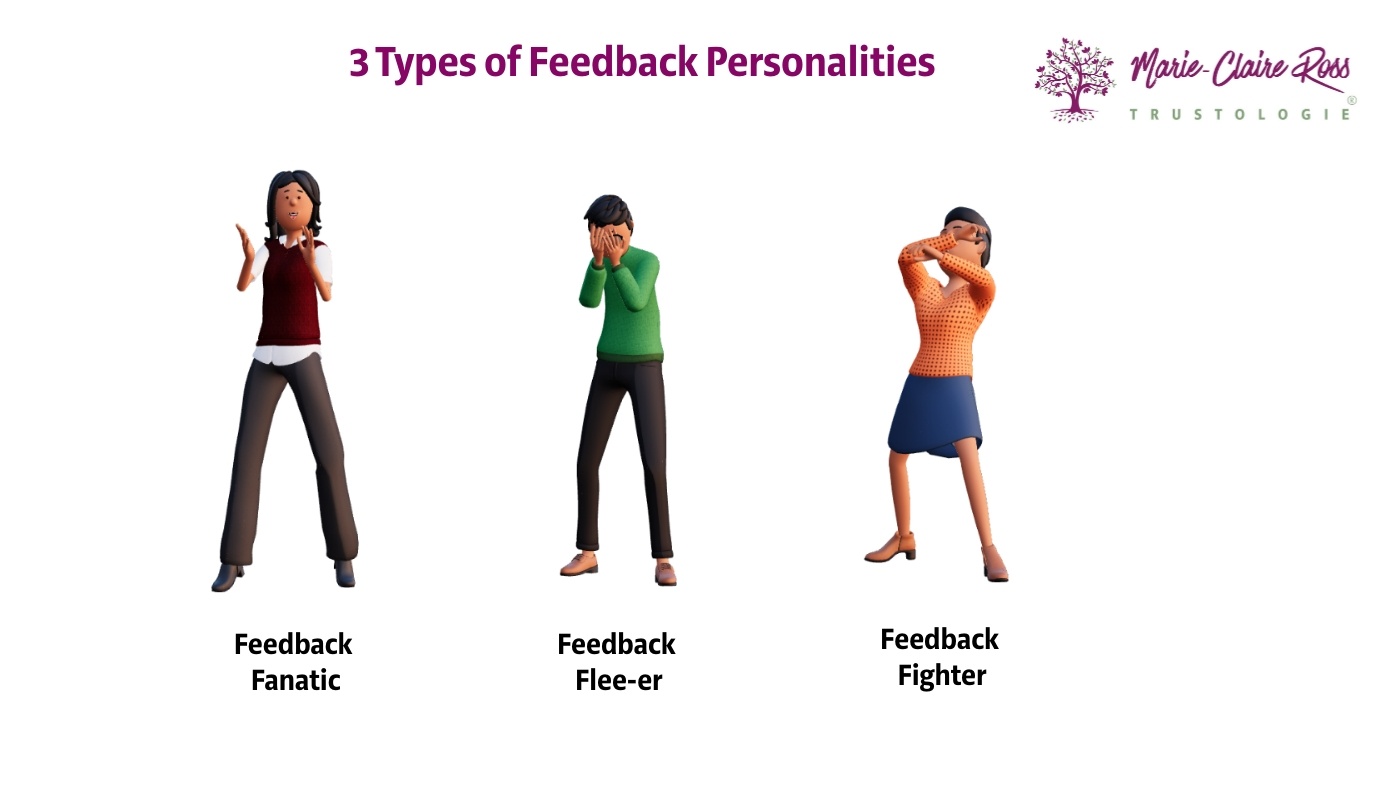6 Essential Executive Skills That Will Make You Unstoppable in 2026
The workplace is evolving at a pace few previous generations have seen and 2026 will mark a turning point. The Future of Work is blended, not hybrid....
Develop leaders, strengthen executive teams and gain deep insights with assessments designed to accelerate trust and performance.

Transform how your leaders think and perform with keynotes that spark connection, trust and high-performance cultures.

Explore practical tools, thought-leadership and resources to help you build trusted, high-performing teams.

Trustologie® is a leadership development consultancy founded by Marie-Claire Ross, specialising in helping executives and managers build high-trust, high-performing teams.

4 min read
Marie-Claire Ross : Updated on October 7, 2020

For years businesses have played around with the concept of remote work. Now that we have been catapulted into new ways of working, it’s fair to say that organisations will blend two working styles together moving forward – with a mix of both remote or office based employees.
For this to work well, it requires leaders to shift their leadership style. New ways of working (WOW) isn’t enough. You also need need ways of leading (WOL). While leaders have had to change pretty quickly over the last few months, the reality is that believing that you can go back to how we used to work is no longer valid.
We are at a wonderful juncture where we can reimagine how work needs to look like. Working for some months in crisis-management mode and moving into a powerful new future requires reintegrating what has been working, discarding what’s not and contemplating what we need, so we can plan and operationalise it.
Essentially, how do we create an organisation that enables employees to feel inspired, energised and innovative, when they are not connected face to face?
 The answer is through cohesive leadership. The highest level of cohesive leadership is what I define as a trust guardian who ensures that accountability for success is at the team level, not the individual level, which encourages people to support one another. It also sends an important message that risk is shared and managed throughout the organisation which increases trust and tolerance for risk. This requires leaders who realise that being a leader is all about people – bringing them together to do their best work in service of the customer.
The answer is through cohesive leadership. The highest level of cohesive leadership is what I define as a trust guardian who ensures that accountability for success is at the team level, not the individual level, which encourages people to support one another. It also sends an important message that risk is shared and managed throughout the organisation which increases trust and tolerance for risk. This requires leaders who realise that being a leader is all about people – bringing them together to do their best work in service of the customer.
What COVID-19 has shown us is the importance of leaders who show compassion and understanding towards their employees and customers. Here are three leadership behaviours that were nice-to-haves before COVID-19, but are quickly becoming the new must-haves:
Visibility is such a multi-faceted issue. Pre-COVID many organisations grappled with improving visibility. Those who managed the transition well to remote were exemplary in how they handled visibility and transparency. Key to visibility is keeping employees informed about what is going on (including sharing financial progress) through regular and consistent communication. It also includes leaders getting out on the floor talking to people (which in today’s parlance is leaders navigating how to be more approachable virtually).
It also means leaders trusting people to work, even when you can’t see people working. This is a critical element to get right because when people don’t feel like they are trusted or that information in the organisation is scant, people are less likely to trust the organisation, their boss and each other.
The challenge moving forward will be continuing to make this a daily habit. This requires leaders that are interested in their people, always a Zoom call away and who don’t shy away from performance conversations. Likewise, leaders must also encourage their employees to also be visible – sharing their progress, asking for help and reaching out to their colleagues.
Key to the transition to working from home were leaders who cared about their employees – checking in with them regularly to make sure they were okay and ensuring that employees had the right work tools and resources. Many employees have felt comforted by the support they were given during the uncertainty.
It’s fair to say that this will need to continue with people managers being partially responsible for employee’s well-being. Working from home can be the perfect recipe for burnout. Leaders will need to guide employees who haven’t learned to draw the line between work and personal time.
In the past, bad bosses have done a lot of harm to people’s mental health. This will no longer be tolerated. Leaders need to not only have the emotional intelligence to help their people see a bright future and understand the meaning in their work, but also familiarise themselves with the warning signs of emotional distress. Being able to help team members with what they can, and can’t control, and provide resources to help will be part of a leader’s remit.
How we interact at work and feel ‘together’ has been turned on its head. With employees returning to the office soon and some employees preferring to work remotely, organisations need to enable hybrid collaboration across teams. This must ignite the spark of innovation and creativity found in face to face meetings or serendipitous meetings in the hallway. Rethinking the tools, physical spaces, training and technology require leaders to not only listen to what their people need but embrace new ways of empowering people to do their best work.
Importantly, it also requires leaders to remind people of customer needs and wants because customers can easily be forgotten in a hybrid environment.
This requires leaders to relook at how they coach, motivate and reward their employees. Even readjusting their language to be more inclusive using ‘we’ rather than ‘I’. It also means making sure that they don’t unintentionally create a divide between the haves and have-nots. Ensuring that those working from home don’t feel left out or those on the frontline who have to be physically present don’t feel hard done by.
As we slowly move from survive to thrive, we now have a tremendous opportunity to bridge what has been and what needs to be. It’s a new fresh slate. Rethinking our working norms means looking at how we can build a more flexible, engaged and resilient workforce.
Leadership involves relationships between people. Leadership effectiveness is related to fostering positive, high-trust relationships between everyone in an organisation – no matter where they are located. There are many ways to create a feeling of togetherness, despite physical gaps. It just requires leaders willing to fully step into the new abnormal world of leading – being more supportive, visible and fostering collaboration. It also means deeply listening to employees (and customers) about what they need and road-testing different ways of collaboration.
Underpinning the new ways of leading are new ways of measuring leadership performance. With leaders now realising that it is not just about getting tasks done, but creating a thriving environment where their people are growing in confidence, competence, self efficiency and belief in their work. It requires reconsidering how we measure today’s drivers of success and productivity – moving from outputs to outcomes.
Re-entering to the office will require leaders who are up to the task for a smooth transition. It means learning and embracing new habits and behaviours. It also means being a people person that knows how to build a cohesive team has become more valuable than ever before. In my opinion, this is an exciting place as it is making us rethink how to create a workplace that is fairer, more compassionate, energetic and creative.
So let’s stop focusing on solely on WOW, as new ways of working won’t work on it’s own. It requires the right leaders who breathe life into organisations through new ways of leading – WOL.
PS: Between you and me I’m not sure WOL is going to take off, at least it rhymes with LOL!

The workplace is evolving at a pace few previous generations have seen and 2026 will mark a turning point. The Future of Work is blended, not hybrid....

Many leaders jump into a leadership position excited by the opportunity to help others and perform at a higher level.

What makes a good team leader isn’t just about having authority or getting tasks done - it’s about the ability to create an environment where people...

The world mourns the passing of the beloved Queen Elizabeth. Not just because of her title, her wealth, or even her fame. We mourn because of the...

Successful leaders understand that a one-size-fits-all approach rarely yields results when it comes to enhancing the performance of individuals...